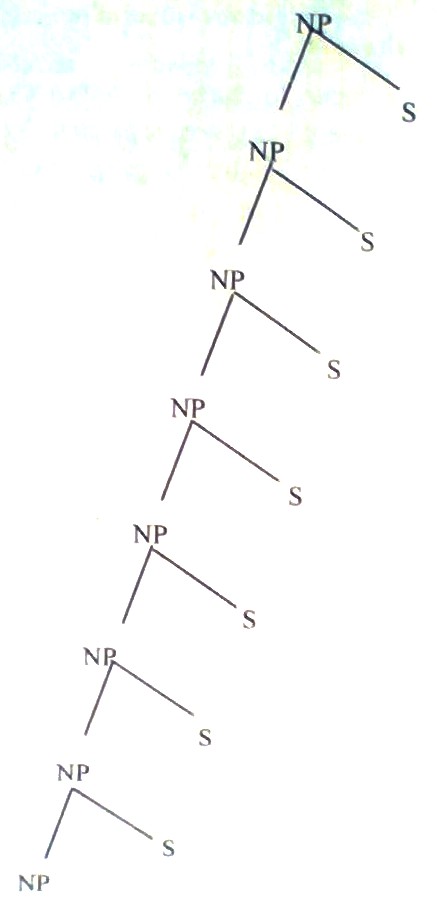1.1 Syntactic Processes
To conduct a syntactic analysis of a language, three fundamental issues need to be addressed: (a) understanding the patterns which underlie sentences, (b) knowing the manners and means of connecting linguistic constituents, and (c) knowing the rules of transforming structures from one type into another. Hence, we will study four major syntactic processes below.
1.1.1 Discontinuous Constituents
Discontinuous constituents refer to parts of sentences. They belong to the same constituent but are separated by other constituents. In English, the phrasal verb ‘pulled down’ in the sentence 'He pulled the thief down' is a discontinuous constituent as it is separated by the constituent the thief:
1.1.2 Recursion
Recursion is used to indicate re-occurrence. That is to say, when a constituent, which has been rewritten by being used to the left of the rewriting symbol, is used in the same or in a later rule to the right of the rewriting symbol, the rules take on a property called recursion.
Through the recursion process, the same rules may be re-applied indefinitely many times within a single derivation, for example:
- The old man
- The little old man
- The little poor old
man
- The clever little poor old man, etc.
This is an example of left recursion. For this kind of sentence, it is possible to see an expansion without apparent limit, and so there can be multiplication of rules.
1.1.3 Conjoining
Conjoining occurs when some elements are
added to other similar elements by using
coordinators, for example:
- The scene of the
movie was in Dhaka city.
- The scene of the
play was in Dhaka city.
These two sentences can be turned into
a new sentence by the process of conjoining:
- The scene of the
movie and the play was in Dhaka
city.
This new sentence produced by the process
of conjoining can be shown in a diagram
as follows:
1.1.4 Embedding
Embedding occurs when a subordinate clause is embedded in a superordinate or main clause, as in the case where you ask me. For example:
-The boy who spoke to you is my brother.
In this example, the subordinate clause "who spoke to you" is embedded in the superordinate clause "The boy is my brother," as is exhibited in the diagram below.
References:
Syntax





